
Fuchsia: how to overwinter?
When, where and how?
Contents
It is important to distinguish carefully between hardy and non-hardy fuchsias when it comes to overwintering. Indeed, many fuchsias are not very hardy in cold. They therefore need specific winter protection, and may even need to be brought indoors. Hardy fuchsias also require their own overwintering techniques. The aim is not only to ensure their survival throughout winter, but also to allow good vegetative regrowth the following spring.
In pots or in the ground, here are all the techniques to overwinter a fuchsia.
Overwintering a potted fuchsia
Potted fuchsias must be sheltered before frost occurs, and from November. Install your potted fuchsias in a frost-free space, preferably bright, with temperature between 5 and 8°C.
Pruning before overwintering is necessary, aiming to remove around one third of stem length, to remove flowers and buds, and as many leaves as possible.
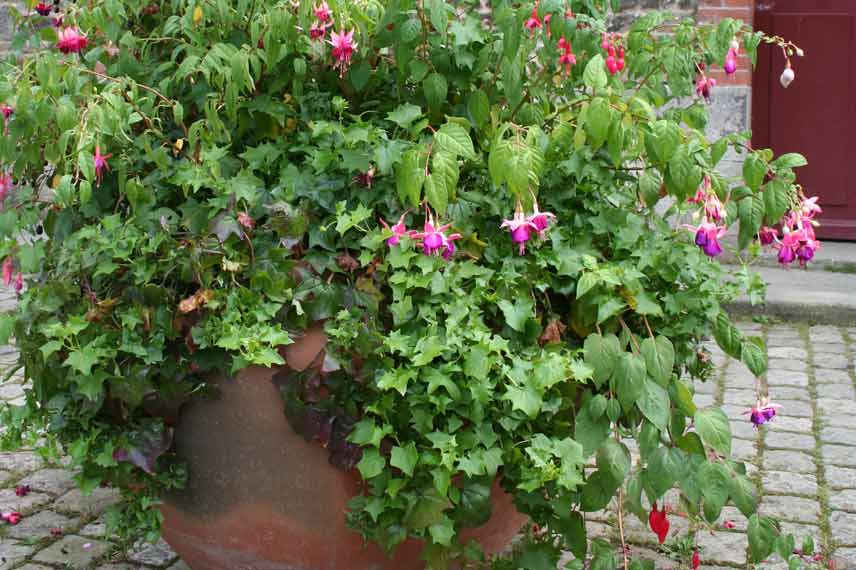
Fuchsia varieties in pots
Fuchsia varieties grown in pots or large containers often belong to non-hardy plants.
Let’s start with the least hardy varieties, those that cannot tolerate any frost, not even light frost. Among these are often trailing varieties such as Giant trailing Fuchsia Annabelle.
In this category, also note varieties of fuchsias with low hardiness, around -5°C. Among them are, for example, Fuchsia Royal Mosaïc and Fuchsia Swingtime. Perennial in pots, they are grown as annuals in the ground (except in the warmest regions of France), unless dug up and placed in pots for winter.
Finally, some mid-hardiness varieties, around -10°C with protection, can be considered for pots or planted in the ground. Among these, notably Fuchsia Tom West and Fuchsia triphylla, both hardy, but slow to regrow.
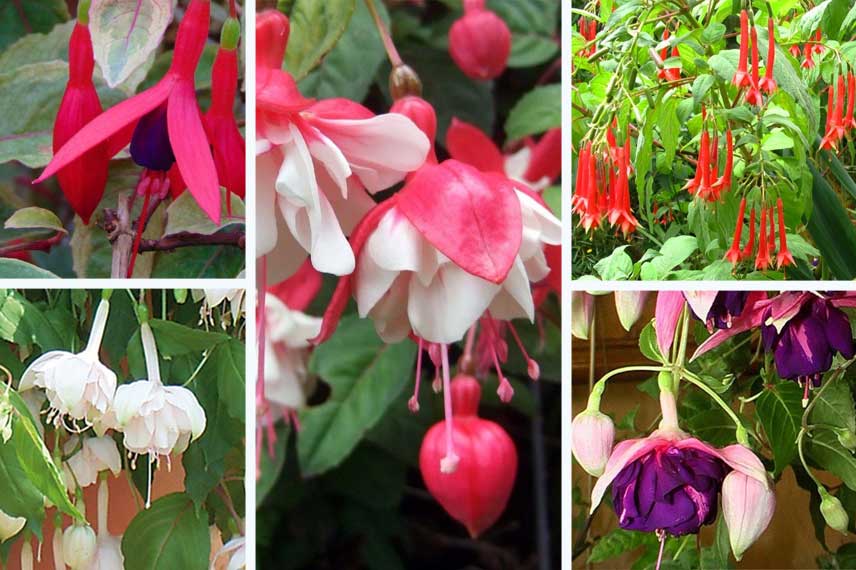
Fuchsia Tom West, Fuchsia Annabelle, Fuchsia Swingtime, Fuchsia triphylla and Fuchsia Royal Mosaïc
Care during overwintering
Do not water potted fuchsias during overwintering, except if the substrate becomes completely dry. Avoid stagnant water in saucers at all costs.
Beware of potential parasitic organisms that often develop under cover. In case of infestation, treat plant with nettle manure, quarantine the pot and treat other fuchsias preventively.
End of overwintering
Potted fuchsias can be moved outdoors in early spring when all risk of frost has passed (March to May depending on region). Once outside, if spring frosts occur, protect pots with a frost cloth or bring them indoors. But before anything else, some maintenance steps are necessary.
1. Repot
- Remove old potting mix from around the rootball.
- Repot plant into draining, rich, humus-bearing and light soil. A substrate composed of a mix of 1/3 garden soil, 1/3 heather soil, 1/3 leaf mould, and river sand if necessary.
- Top up with an organic fertiliser.
- Water thoroughly.
2. Prune
- Prune fuchsia moderately, removing dead or weak shoots. Keep only the thicker shoots, shortening them as well.
3. Move pots outdoors
- Wait three to four days before moving pots outside.
- Place pots side by side in a sunny aspect (south-facing), against a wall and sheltered from winds.
- Gradually resume watering and apply a Fuchsia-specific fertiliser daily.
- When days warm up, place fuchsias in partial shade.
Overwintering a non-hardy fuchsia planted in open ground
Non-hardy varieties planted in ground are either grown as annuals or lifted and potted for winter. You can also follow the steps below to protect hardy fuchsias when spring regrowth is hampered by cold.
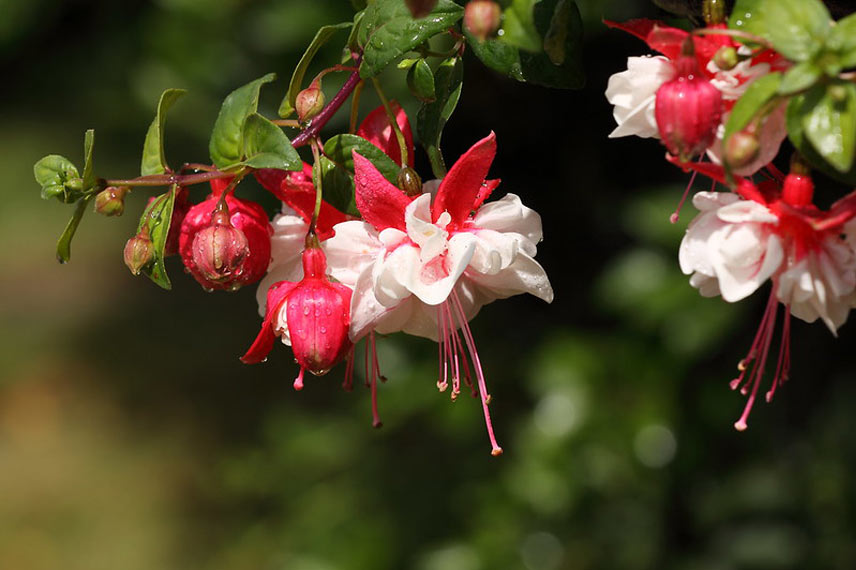
Fuchsia ‘Swingtime’- © Dean Morley – Flickr
- Lift fuchsia plants from ground using a digging fork. Take care not to damage roots.
- Cut shoots back to 8 cm using pruning shear, cutting ends of the thicker branches. Remove all small weak shoots.
- Shorten roots by a few centimetres.
- Replant fuchsia plants in pots of a diameter suited to root volume.
- Use a substrate made of a mix of ⅔ garden soil and ⅓ leaf mould.
- Plant fuchsia, firm soil down and water lightly.
Plants are then overwintered in the same way as fuchsias grown in pots.
Discover other Perennial Fuchsia
View all →Available in 1 sizes
Available in 2 sizes
Available in 1 sizes
Available in 1 sizes
Available in 2 sizes
Available in 2 sizes
Available in 2 sizes
Available in 1 sizes
Available in 1 sizes
Available in 1 sizes
Overwinter a hardy fuchsia in the ground
Outdoor wintering techniques help fuchsias, even the most hardy, survive the harshest winters.
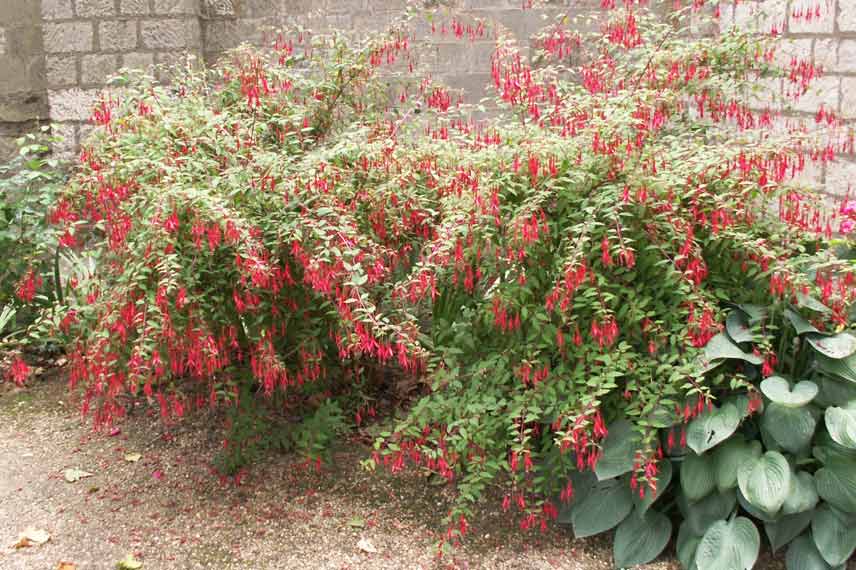
Fuchsia varieties grown and overwintered in open ground
Fuchsias grown in open ground are generally the hardiest of the genus. But again, it is important to distinguish those that tolerate the cold but struggle to flower again afterwards, from those that can withstand severe frosts and readily regrow into vegetation and flowers afterwards. This second category generally includes all varieties of Fuchsia magellanica and certain proven hybrids.
- Fuchsia magellanica is the hardiest, down to −15°C. Its most resilient cultivars include Fuchsia magellanica var. gracilis, Fuchsia magellanica var. molinae and Fuchsia magellanica var. arauco.
- Fuchsia regia ‘Reitzii’ is a shrubby species also hardy to around −10/−12°C, as is Fuchsia ‘Alice Hoffman’, hardy to −11°C.
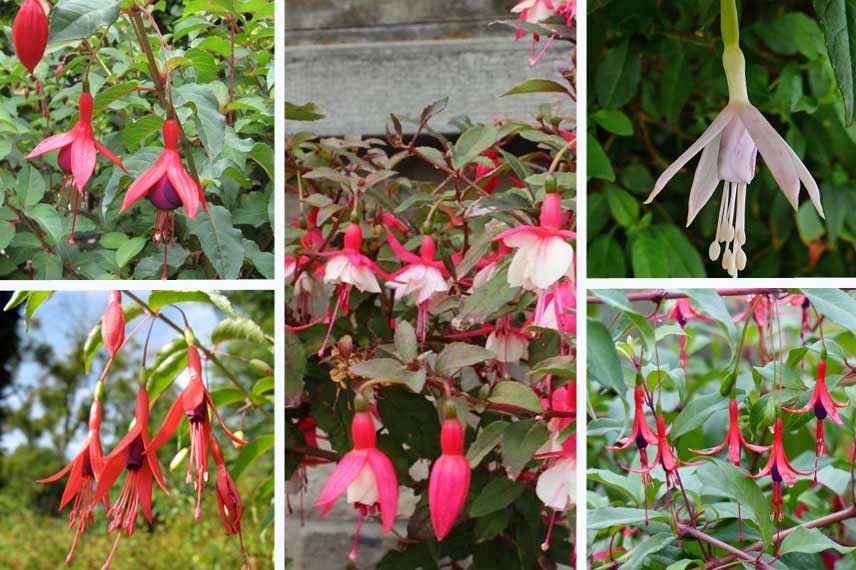
Fuchsia magellanica, Fuchsia magellanica var. gracilis, Fuchsia ‘Alice Hoffman’, Fuchsia magellanica var. molinae, and Fuchsia regia ‘Reitzii’
Overwintering fuchsia in open ground
- In November, cut back stems of fuchsia to 15 cm above soil.
- Then cover it with a thick mulch of dead leaves or fern fronds.
- Wrap it all in an over-wintering fleece, or cover it with a waterproof tarpaulin.
With this technique, you will limit risks of fermentation and rot, especially if soil is poorly drained.
Care after winter
- In April, start by clearing the base of the plant.
- Then remove above-ground parts damaged by frost or rot.
If its stump is not frozen, your fuchsia should soon produce new shoots.
Useful links
- Find all our perennial fuchsias to grow in the garden or in pots.
- Discover our selection of hardiest fuchsias to grow in open ground.
- Follow all our growing advice for your fuchsias in pots and in open ground.
- Subscribe!
- Contents


































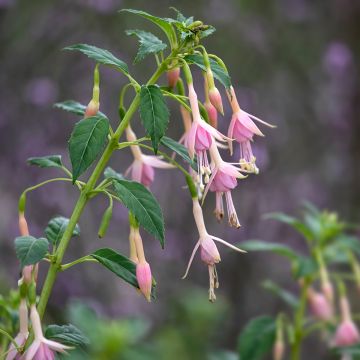

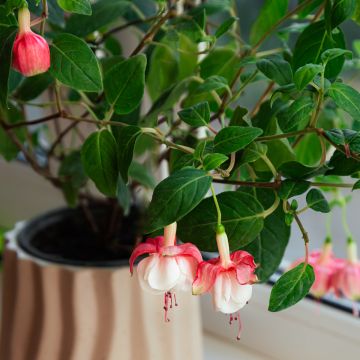





Comments